Related Research Articles
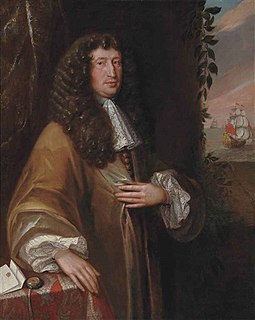
John Barrington, 1st Viscount Barrington, known as John Shute until 1710, was an English dissenting theologian and Whig politician who sat in the House of Commons from 1715 to 1723.
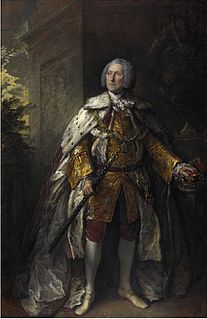
General John Campbell, 4th Duke of Argyll KT PC, was a British Army officer and Scottish Whig politician who sat in the House of Commons between 1713 and 1761. From 1729 to 1761 he was known as John Campbell of Mamore.

General William Henry Kerr, 4th Marquess of Lothian was a Scottish nobleman, British soldier and politician, the eldest son of William Kerr, 3rd Marquess of Lothian. He was styled Master of Jedburgh until 1722, Lord Jedburgh from 1722 to 1735, and Earl of Ancram from 1735 to 1767. As the Earl of Ancram, he distinguished himself during the War of the Austrian Succession.
Dysart Burghs was a district of burghs constituency of the House of Commons of Great Britain from 1708 to 1801 and of the House of Commons of the United Kingdom from 1801 to 1832. It elected one Member of Parliament (MP).
William Dalrymple was a Scottish Whig politician who sat in the Parliament of Scotland from 1702 to 1707 and in the British House of Commons between 1707 and 1741.
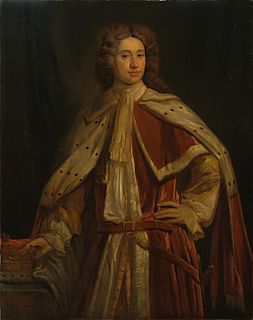
John Ker, 1st Duke of Roxburghe, KG, PC, FRS was a Scottish nobleman.

Sir John Anstruther, 1st Baronet was a Scottish politician who sat in the Parliament of Scotland from 1702 to 1707, and in the British House of Commons from 1708 to 1741.
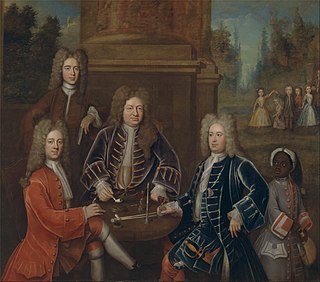
Lord James Cavendish FRS of Staveley Hall, Derbyshire was a British Whig politician who sat in the English House of Commons between 1701 and 1707 and in the British House of Commons between 1707 and 1742. He was also a member of the Cavendish family.

George Douglas, 13th Earl of Morton, of St Ola, Orkney, styled The Honourable George Douglas between 1681 and 1730, was a Scottish nobleman, soldier and politician who sat in the House of Commons from 1708 until he succeeded to a peerage in 1730.
Brigadier Edward Montagu or Montague was a British Army officer and politician who sat in the House of Commons from 1722 to 1734.

Henry Dawnay, 2nd Viscount Downe, styled The Honourable Henry Dawnay between 1681 and 1695, was an English Tory politician who sat in the English House of Commons between 1690 and 1707 and in the British House of Commons from 1708 to 1727.

Daniel Wilson of Dallam Tower, Westmorland was a British Whig politician who sat in the House of Commons for a total of 34 years between 1708 and 1747.
Lieutenant-General James Tyrrell of Shotover, Oxfordshire, was a British Army officer and Whig politician who sat in the House of Commons from 1722 to 1742.

Brigadier-General Thomas Paget was a British Army officer and politician who sat in the House of Commons from 1722 to 1727. He was the ancestor of the Paget family, Marquesses of Anglesey.
William Steuart of Seatter, Orkney was a Scottish lawyer and Whig politician who sat in the House of Commons from 1713 to 1741. An agent of the 2nd Duke of Argyll, he pursued Argyll's interests in Parliament and without, and held a succession of public offices.
Sir Robert Pollock, 1st Baronet (c.1665–1735), of Pollok, was a British Army officer and Scottish politician who sat in the Parliament of Scotland from 1700 to 1707 and in the British House of Commons from 1707 to 1722.
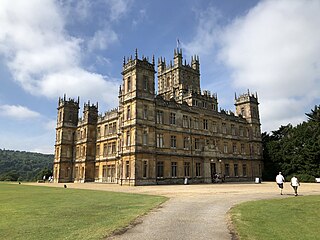
Robert Sawyer Herbert of Highclere Castle, Hampshire, was a British politician who sat in the House of Commons for 46 years from 1722 to 1768.
Thomas Leslie, of Stenton, Fife, was a British Army officer and Scottish politician who sat in the House of Commons between 1734 and 1761.
Robert Ker, 3rd Earl of Roxburghe PC was a Scottish nobleman.
References
- 1 2 "KERR, Hon. William (bef.1682-1741)". History of Parliament Online (1690–1715). Retrieved 18 August 2018.
- 1 2 3 J. M. Simpson, KERR, Hon. William (bef. 1682-1741). in The History of Parliament: the House of Commons 1715-1754 (1970).
 This article incorporates text from this source, which is in the public domain : Historical record of the Seventh, or, The Queen's Own Regiment of Hussars (1842) by Richard Cannon , p. 91-92
This article incorporates text from this source, which is in the public domain : Historical record of the Seventh, or, The Queen's Own Regiment of Hussars (1842) by Richard Cannon , p. 91-92